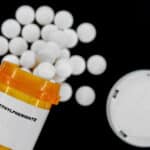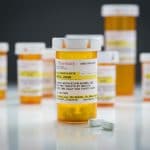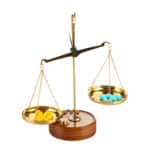Is Ritalin (Methylphenidate) A Stimulant?
Ritalin is the brand name for the prescription stimulant methylphenidate hydrochloride. Prescription stimulants can increase energy, focus, and alertness, which makes them useful for treating attention-deficit hyperactivity disorder (ADHD) and narcolepsy.
However, like other prescription stimulants, Ritalin is classified as schedule II controlled substances.
This means they have a potential for abuse and dependence. Long-term abuse of stimulants can lead to addiction and serious health problems, including high blood pressure, irregular heartbeat, and psychosis.
What Are Stimulant Medications?
Stimulant medications are a class of prescription drugs most commonly used in the treatment of ADHD. Stimulants for treating ADHD increase energy and can be used to treat narcolepsy, a sleep disorder that causes periods of excessive daytime fatigue.
Stimulant drugs can be short or long-acting, which describes how the drug is released in the body.
Short-Acting Stimulants
Short acting stimulants act quickly and the effects last up to six hours. Short-acting stimulants include Ritalin, Adderall (amphetamine/dextroamphetamine), and Dexedrine (dextroamphetamine).
Long-Acting Stimulants
Long-acting stimulants are released in the body gradually, to help treat symptoms throughout the day. Long-acting stimulant drugs include Ritalin LA, Ritalin SR, Adderall XR (extended-release), Vyvanse (lisdexamfetamine), and Concerta (methylphenidate).
How Prescription Stimulants Work
Central nervous system stimulants increase activity in the brain and stimulate production of the neurotransmitters dopamine and norepinephrine. Increasing dopamine and norepinephrine can help lessen ADHD symptoms, including impulsivity and inattention.
Increased levels of norepinephrine can increase blood pressure, heart rate, blood sugar, and breathing. Dopamine is associated with the pleasure and reward system in the brain. When Ritalin is abused, increased levels of dopamine may produce euphoric effects.
Prescription stimulants can also produce unwanted side-effects. Common side-effects of Ritalin and other stimulant medications may include:
- loss of appetite
- weight loss
- trouble sleeping
- high blood pressure
- dizziness
- headache
- anxiety
- irritability
Ritalin Abuse
Ritalin and other prescription stimulants are commonly abused to increase productivity at work or school. However, drug abuse is dangerous because it can lead to stimulant overdose, addiction, and other dangerous health conditions.
Substance abuse includes:
- taking Ritalin without a prescription
- taking higher doses of Ritalin than prescribed
- taking Ritalin for its pleasurable effects
- crushing, snorting, or injecting Ritalin pills
The long-acting formulation of Ritalin is intended to be released into the bloodstream slowly over the course of 6-8 hours. Abuse of a long-acting drug can cause a large dose to be released into the bloodstream quickly, which can result in a life-threatening overdose.
A stimulant overdose can cause an irregular heartbeat, which can lead to seizures, heart attack, and death.
Ritalin Health Risks
Although Ritalin can be used safely when taken as prescribed, abuse of the medication increases the risk of experiencing health complications. Serious side-effects of Ritalin may include heart problems, psychosis, and serotonin syndrome.
Heart Problems
Long-term Ritalin abuse means your central nervous system (CNS) is frequently exposed to higher levels of norepinephrine.
Although Ritalin may temporarily increase heart rate, heavy drug abuse increases the risk of long-term heart problems, like irregular heartbeat and high blood pressure.
Psychosis
Ritalin’s effect on the brain can also have a dangerous impact on mental health. Long-term abuse can cause anxiety, irritability, and psychosis.
Stimulant-induced psychosis can cause hallucinations, delusions, and paranoia. The risk of psychosis is increased in individuals who are diagnosed with co-occurring mental health disorders, like bipolar disorder.
Serotonin Syndrome
According to the Food and Drug Administration (FDA), the use of antidepressants with Ritalin can cause a dangerous drug interaction known as serotonin syndrome.
Both stimulants and antidepressants, including monoamine oxidase inhibitors (MAOIs), increase serotonin levels in the brain.
Toxic levels of serotonin can cause a life-threatening reaction that requires immediate medical care. Signs of serotonin syndrome may include:
- rapid heart rate
- twitching muscles
- headache
- high fever
- seizures
- loss of consciousness
Ritalin Addiction
Ritalin and other stimulant drugs can also lead to dependence, a condition that occurs when the brain relies on the drug to function. Stimulant dependence increases the risk of developing a substance use disorder (SUD), also referred to as addiction.
Stimulant addiction can lead to intense cravings and uncontrollable use, regardless of the consequences. Stopping drug use can be difficult without the help of trained healthcare professionals.
At Northeast Addictions Treatment Center, we understand the complexities of addiction. We offer evidence-based treatment options, like behavioral therapy, to help you maintain long-term recovery. To learn more about our treatment options, please reach out to us today.
Sources
Written by
Northeast Addition Editorial Team
©2024 Northeast Addition Center | All Rights Reserved
This page does not provide medical advice.









